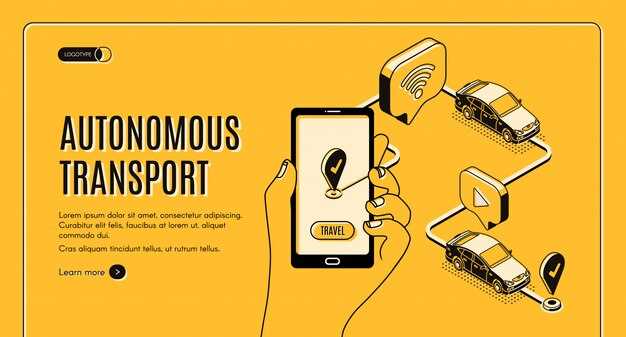
The automotive industry is undergoing a significant transformation as subscription models for car features gain traction. This shift not only impacts traditional ownership but also redefines how consumers interact with technology and services in their vehicles. By enabling users to pay for specific features on a subscription basis, manufacturers are discovering new revenue streams and enhancing customer engagement.
Subscription services in the automotive sector allow drivers to access advanced functionalities without committing to a hefty upfront cost. This model enables car manufacturers to offer features such as enhanced navigation systems, advanced safety technologies, and premium entertainment packages, making them accessible to a broader audience. As a result, consumers can customize their driving experience according to their needs, preferences, and budget, fostering greater satisfaction and loyalty.
Furthermore, this paradigm shift encourages continuous innovation in car technology. As automakers realize the potential for recurring revenue, they are incentivized to regularly update software and introduce new features that consumers can opt into. This constant evolution not only sustains customer interest but also elevates the standard of automotive technology, pushing the boundaries of what vehicles can offer.
How Subscription Services Change What Features Are Available in Modern Vehicles

Subscription services in the automotive industry are revolutionizing the range of features and technologies available in modern vehicles. Traditionally, consumers purchased vehicles with a fixed set of features, often resulting in a disconnect between user needs and the functionalities provided. Subscription models enable manufacturers to offer a more flexible approach, allowing users to access premium features for a monthly fee without the upfront investment associated with buying a new vehicle.
This shift allows car manufacturers to continuously innovate and update features, leveraging over-the-air updates to add functionality or improvements without requiring a visit to the dealership. For instance, aspects such as advanced driver assistance systems (ADAS), enhanced navigation capabilities, and in-car entertainment options can be introduced or upgraded via subscription, providing users with the latest technology as it becomes available.
Moreover, subscription services foster a more personalized driving experience. Customers can select features tailored to their specific needs, from high-performance driving modes to luxury interior enhancements, effectively allowing them to customize their vehicles according to individual preferences. This model appeals particularly to those who may not want to commit to a long-term purchase or who are keen to try out new features before integrating them permanently into their vehicle.
Additionally, the subscription model can drive market competition. As manufacturers vie for consumer attention, they are incentivized to offer unique and innovative features that stand out in a crowded marketplace. This can lead to rapid advancements in technology and features, benefiting consumers through a wider array of choices.
Ultimately, subscription services are transforming not just what features are available, but how consumers engage with their vehicles. They represent a shift toward a more dynamic, user-centered approach to automotive technology, where driving experiences can evolve in real-time through seamless access to new functionalities.
The Financial Implications of Adopting Car Feature Subscriptions for Consumers

The rise of subscription models in the automotive industry represents a significant shift in how consumers interact with vehicle features and functionalities. Rather than purchasing vehicles with a fixed set of features, consumers are now offered the option to subscribe to additional functionalities, ranging from advanced driver-assistance systems to entertainment services. This model raises various financial considerations for consumers.
One immediate implication is the impact on upfront costs. Traditional vehicle purchases typically require a substantial initial investment, often leading to higher monthly payments. Subscription models can lower the barrier to entry. Consumers may be able to acquire a vehicle with essential features at a more affordable price, while opting for subscriptions to additional features as needed. This flexibility can help consumers manage their budgets more effectively, allowing them to allocate funds toward features that suit their lifestyle.
However, the long-term financial consequences of subscriptions can accumulate. While the initial costs may be lower, ongoing subscription fees can add up over time. Consumers must carefully evaluate whether the cumulative cost of subscriptions for desired features exceeds the cost of outright purchasing those features. Continuous payments could lead to higher lifetime expenses compared to a one-time purchase model.
Moreover, the fluctuating nature of subscription fees introduces another layer of financial uncertainty. Manufacturers may adjust subscription costs, influenced by market dynamics or changes in services offered. Consumers could find themselves facing rising fees, which can strain budgets in the long run. It’s crucial for consumers to consider the potential for price increases and how it impacts overall vehicle ownership costs.
In addition to direct costs, subscriptions may affect vehicle resale value. Traditionally, features such as enhanced safety technologies or infotainment systems add value to a used car. However, if key features are tied to subscriptions, potential buyers may view vehicles as less desirable. This could ultimately drive down resale prices for vehicles that don’t have permanently installed features, presenting a challenge for consumers looking to maximize their investment.
Lastly, the financial implications extend beyond cost considerations to encompass service reliability and customer support. Consumers may pay for advanced features that require ongoing software updates and maintenance. If the subscription service experiences technical issues or if the manufacturer fails to provide adequate support, the value derived from the subscription may diminish. This aspect requires consumers to evaluate not only the cost but also the quality of service associated with subscribed features.
In conclusion, while subscription models offer flexibility and lower initial costs, consumers must approach these options with a critical eye. Analyzing total costs, potential price increases, effects on resale value, and the reliability of services can help consumers make informed decisions about adopting car feature subscriptions. A comprehensive understanding of these financial implications is essential for navigating the evolving landscape of automotive ownership.
Comparing Traditional Ownership vs. Subscription Models in the Automotive Industry
Traditional ownership of a vehicle typically involves a significant upfront investment, where consumers purchase a car outright or finance it through loans. This model demands a commitment from buyers who may need to allocate a substantial portion of their budget towards maintenance, insurance, and depreciation. Owners often feel tied to their vehicle, facing challenges if they wish to switch to a different model or brand, as selling or trading in a car can be a lengthy process.
In contrast, subscription models offer a flexible alternative. These plans allow consumers to pay a monthly fee for access to a vehicle, which often includes maintenance, insurance, and the ability to switch models based on personal or seasonal needs. This flexibility can be particularly appealing to urban dwellers who may not require a car full-time or who enjoy driving different vehicles over time. Subscription services can facilitate easier access to newer technologies, such as electric or autonomous vehicles, which may appeal to environmentally conscious consumers.
Moreover, subscription models provide a simplified experience devoid of the complexities of traditional ownership. Users can cancel or modify their subscription plans with relative ease, adapting to changing lifestyles or economic conditions without the burdens of long-term commitments. This adaptability is critical in a rapidly evolving automotive market, where consumer preferences can shift due to trends, technology advancements, or economic factors.
However, the subscription model may not be ideal for everyone. For those who drive frequently or have a predictable travel routine, traditional ownership might offer greater long-term value despite the upfront cost. While subscription services present an appealing proposition for convenience and flexibility, they can accumulate higher costs over time compared to outright ownership.
Ultimately, the choice between traditional ownership and subscription models hinges on individual lifestyle, financial situation, and personal preferences. Both models have their advantages and drawbacks, and understanding these factors is crucial for consumers navigating the evolving automotive landscape.

